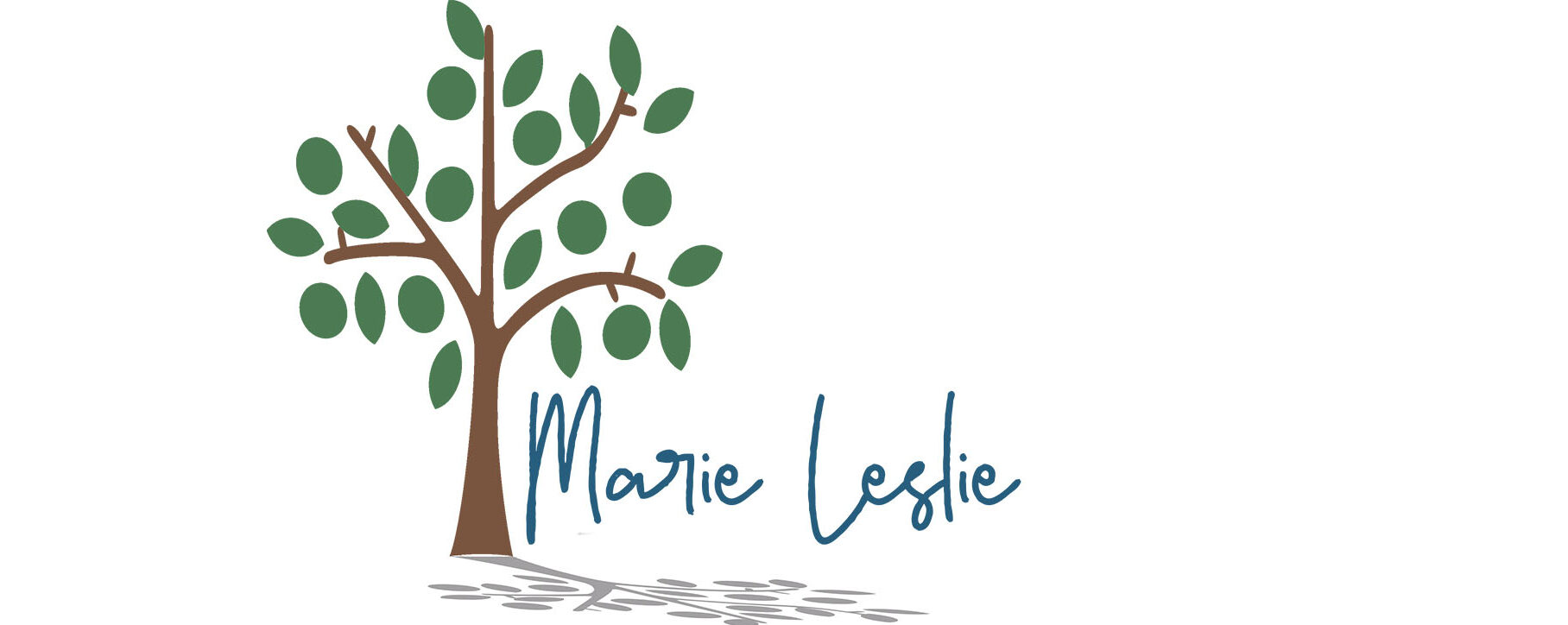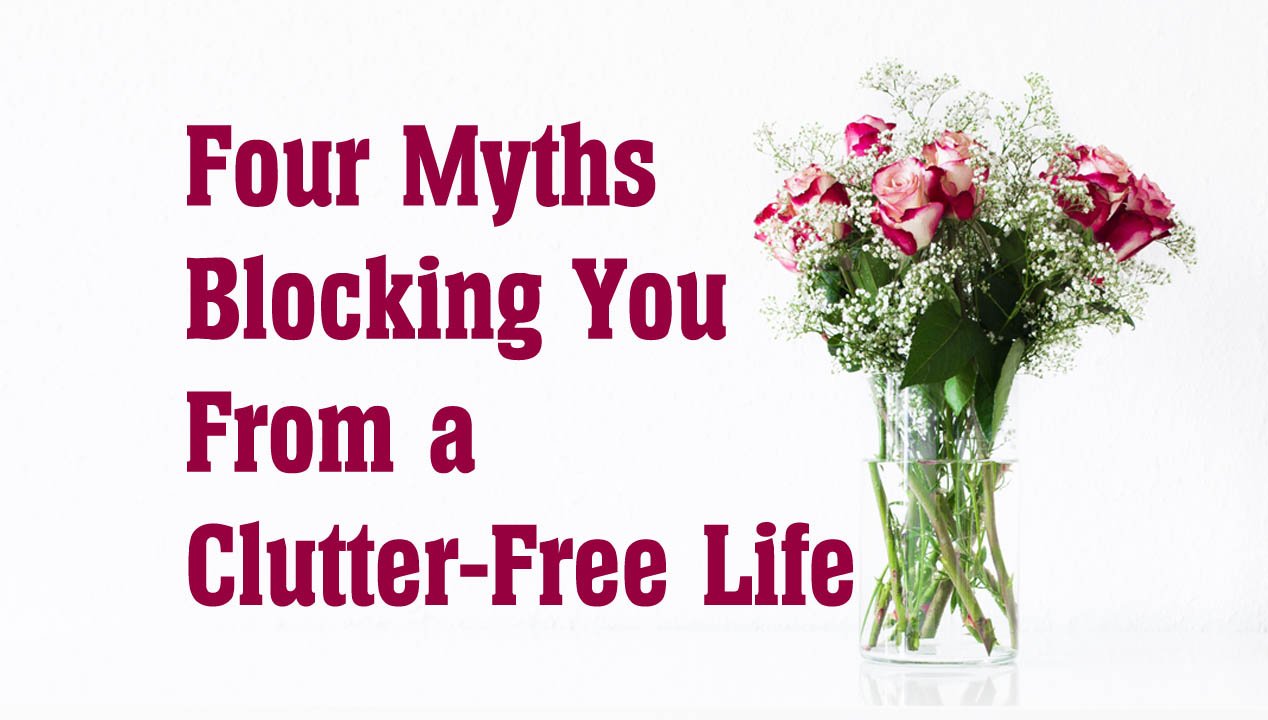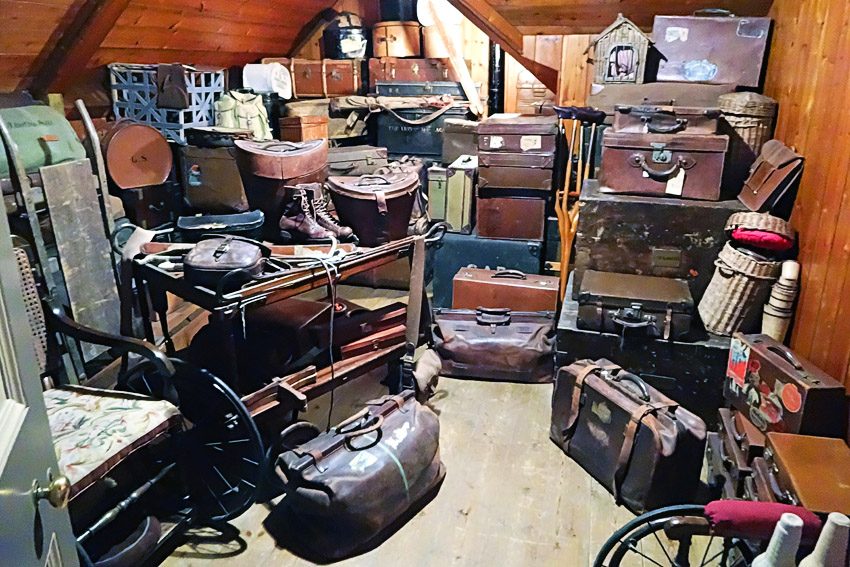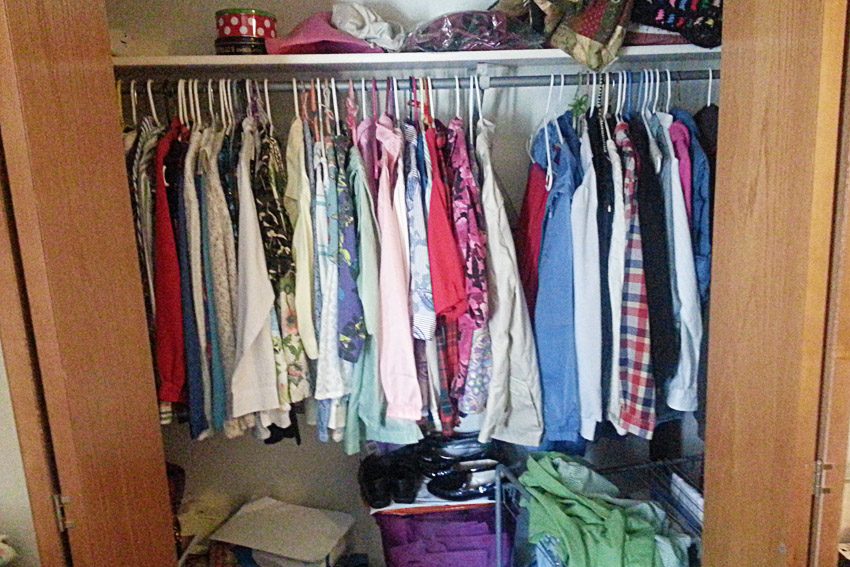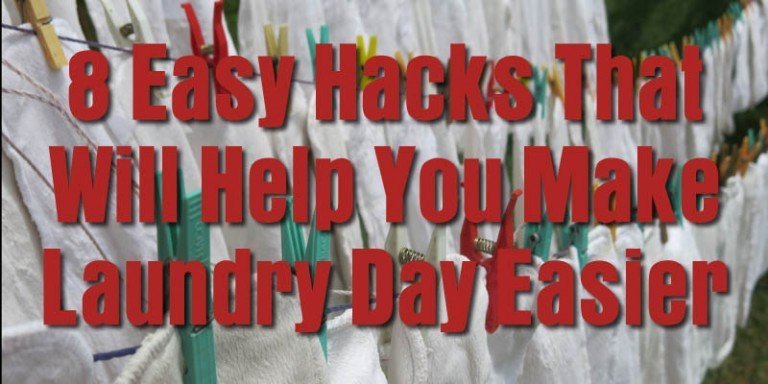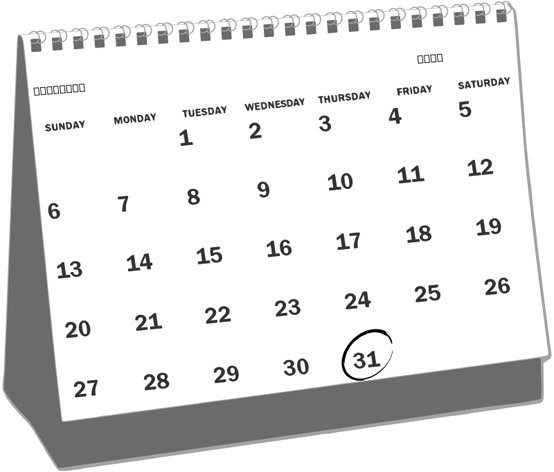4 Myths Blocking You From a Clutter-Free Life
Clutter is a thief of time, money and peace. Are you letting clutter rob you? Are you ready to live a clutter-free life? What’s holding you back?
When we feel consumed by clutter and feel unable to get rid of it and become clutter-free, it is usually because we have mistaken beliefs about the clutter—or about the cause of it. Here are four of the most common myths that block you from living a clutter-free life. Which one applies to you?
Myth #1: I Might Need This Someday
This is probably the number one reason for the buildup of clutter in our homes and offices. You have something you acquired, either for a specific event or purpose, or something that you used to use regularly. Maybe it was a serving dish for a party, decor for a holiday, or an item of clothing for a special occasion. Or maybe just an extra of something. But whatever the item, you haven’t used it in months or even years. And yet, there it sits collecting dust in the cupboard.
You’re still hanging on to it because “someday” you might need it, and you don’t want to spend time and money to buy it again. I thought like this too, and I had a garage and an attic full of important things I might need someday. One day I was rummaging through the attic to find a backpack for one of my children because theirs fell apart. I found a brand-new really awesome and not inexpensive computer backpack. It was perfect for my high school student. Until I picked it up and it fell apart in my hands. In the couple of years it sat in storage it dry rotted. And I had to buy a new backpack anyway.
This is what happens when we stash things away for “some day.” It wouldn’t have been wasted if I had passed it along to someone who could have used it right away instead of keeping it for that mythical some day when I would need it. So, let go of that clutter and don’t let it become waste.
Myth #2: I Don’t Have Time To Declutter
You don’t have time to declutter? Do you have time to keep going through the clutter hunting for what you need? If the clutter magically disappeared today, how much time would you save not looking for important papers or other things that have gotten buried in the back of closets and cupboards?
Set aside the time you need to tackle the clutter and get rid of it. You don’t have to do it all in one day. You can declutter 15 minutes at a time. If you can, an hour or two or even a whole afternoon works better. If you don’t know how to get started, read this how-to-declutter post. However you do it, make time and start decluttering. You will be amazed at the time you save once you’re not digging through clutter. Or giving up in frustration and heading to the store to re-buy whatever it is you can’t find in the clutter. A clutter-free life will give you more time, not less.
Myth #3: I Paid A Lot For It, So I Can’t Just Get Rid Of It
A number of years ago, I was decluttering closets for a family member when I found a comforter I had never seen. It was old enough to be “vintage” and in good condition. I asked why it was in the closet. She told me it was the first comforter she and her husband bought when they got married (45 years earlier) and it was expensive, so she couldn’t get rid of it, though it hadn’t been on a bed in close to 40 years.
How many articles of clothing (that are well on their way to being out of style, if they aren’t there already) are hanging in your closet with the tags still on? How many that have only been worn once? Why are there still there? If they are purchase mistakes, or they didn’t fit right or look as good as you’d hoped, why are they still there? Keeping things you don’t use, don’t like or don’t want just because you paid a lot for them won’t recoup the purchase price. We all make purchase mistakes. We all buy pricey items and then eventually tire of them or make changes in our homes, lives or decor that make those items obsolete. Those aren’t mistakes. That’s just life.
But they are good items, so they shouldn’t go to waste languishing in our closets and basements. You have my permission to forgive yourself for any purchasing missteps, and for falling out of love with things, and send those items off to new homes where they can be loved and appreciated and USED by someone who needs them. Forgive yourself, let go of what you’ve already spent and free up space in your home and life for good purchases.
Myth #4: I Have to Keep It Because it Was A Gift
Aunt Martha gave me that hideous wall hanging for my wedding. If I got rid of it, her feelings would be hurt. That set of encyclopedias belonged to my grandfather. My mother would be so upset if I let it go. Does Aunt Martha come over regularly to check on the wall hanging that you hid in the guest room closet? And when was the last time anyone looked at a set of encyclopedias (are you even old enough to know what an encyclopedia is)?
Here’s the rule for keeping “stuff:” No one who doesn’t live in your house gets to decide what you keep in your house. Period. There is nothing wrong with keeping things that are meaningful to you, whether it was a gift, a family heirloom, or just something you love. But if the only reason you’re keeping it is because you don’t want to hurt someone else’s feelings or because you feel guilty about not loving it, it’s clutter and it needs to go. If it’s a family heirloom, offer it up to whichever family member will love and cherish it. If no one else wants it, you are not obligated to keep it. The same with family gifts. It doesn’t matter how an item came into your possession. If it doesn’t work for your life, it’s clutter.
As William Morris said, “Have nothing in your houses that you do not know to be useful, or believe to be beautiful.”
These four myths are the culprits behind most of the clutter in our lives. Now that you know these myths for what they are, you can change your mindset and start living a clutter-free life.
How can I help you achieve a clutter-free lifestyle that frees up your time, your money and gives you back your peace of mind? Let me know in the comments below, drop me an email or chat with me on Facebook or Twitter.
